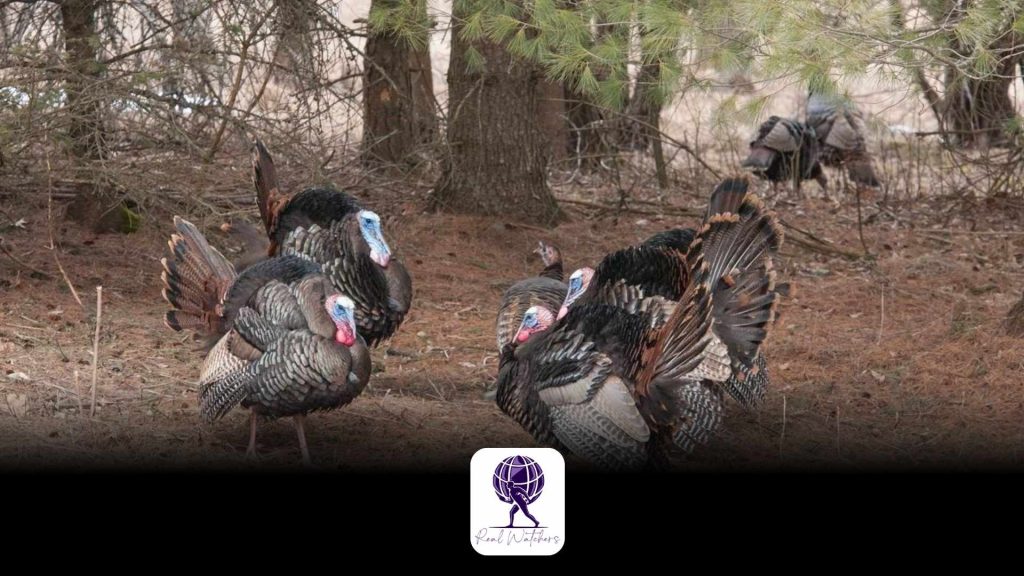In 1969, a significant initiative to revitalize Vermont’s wild turkey population commenced with capturing a few net-trapped birds from New York. Currently, the birds are seen in large numbers across the state, with populations reaching into the tens of thousands despite experiencing declines in other regions of the United States. What successes has Vermont achieved?
On the afternoon of February 28, 1969, Bill Drake and John Hall entered the snow-covered landscape. A group traversed the landscape near Pawlet, Vermont, surrounded by nut-bearing oaks and hickory trees. They were dressed in lumberjack shirts, thick woolen socks, and sturdy boots, embodying the rugged spirit of the outdoors. In their early twenties, the two men were observed transporting two wild male gobblers from New York. Unbeknownst to the turkeys, their role was pivotal in the effort to repopulate Vermont.
The biologists’ endeavor, captured on grainy film featuring a color palette and beanie hats reminiscent of a Wes Anderson film, stands out not only for its remarkable details—such as rocket nets and small shelters nestled in the forest—but also for the lasting impact of their work. Vermont’s wild turkeys represent a remarkable success in wildlife restoration, maintaining their population levels over time, in stark contrast to the declining numbers observed in other regions of the United States.
The future of turkeys in Vermont is intricately linked to the state’s forests. In the past, Vermont was predominantly forest-covered.
In his work History of Forestry in Vermont, Perry H Merril recounts the moment Samuel D. Champlain navigated the lake that now carries his name. Upon witnessing the lush, green forested slopes, Champlain reportedly exclaimed, ‘Voilà les verts monts,’ which translates to ‘Behold the green mountains.’ As the story goes, this phrase was later shortened and is believed to have inspired the state’s name.
During the mid-1800s, significant land clearing occurred to accommodate agricultural activities, while timber resources were utilized to expand railroads and various construction projects.
Merril highlights a troubling aspect in his History, noting that forests were systematically cleared as trees were perceived as an “impediment to settlement.” This deforestation also eliminated potential shelter for the Native American Abenaki people, who have inhabited Vermont for more than 12,900 years.
Subsequent deforestation profoundly impacted Native American communities, which depended on the forest for sustenance, medicinal plants, and essential tools.
The decline of various animal species, notably the wild turkey, has been attributed to rapid deforestation and intensified by the pressures of overhunting. The wild turkey population in Vermont ultimately faced complete extinction.
However, several decades later, the scenario shifted significantly. The state’s decline in farming can be attributed to several significant factors, including the Civil War, Western migration, and urbanization. Vermont’s forests have experienced a remarkable resurgence, positioning the state among the most densely forested in the nation today.
Efforts in habitat restoration have ignited optimism for the resurgence of turkey populations. During the 1950s, a small group of enthusiasts dedicated to avian observation, Residents of Vermont, began releasing farm-raised turkeys into the lush mountains of the region.
Unfortunately, the birds, having been accustomed to farm environments, struggled to adapt to their natural surroundings and ultimately did not survive.
In the 1960s, the Vermont Fish and Wildlife Department sought assistance from New York State, which granted permission to capture a limited number of wild birds from New York. The aim was to reintroduce these birds to Vermont, believing that they would thrive in their native habitat. The species in question was the Eastern Wild Turkey, Meleagris gallopavo silvestris.
According to the Vermont Fish and Wildlife Department, this bird has become “the most widely distributed and abundant of the five distinct subspecies of wild turkey found in the United States.” These sizable avians can reach running speeds of up to 25 mph, while their flying speeds can soar to 35 mph, equivalent to 40 and 56 km/h, respectively.
Bill Drake, a young biologist specializing in wild turkeys, has been tasked with life trapping these birds in southwestern New York and transporting them back to Vermont. Capturing a wild turkey through live trapping presents more challenges than anticipated.
“He had to endure the winter in a small blind shelter, coaxing the turkeys into a designated area where he could deploy a trap net by scattering some corn,” explains Hall, who previously served as an information assistant at the Vermont Fish and Wildlife Department. In the winter of 1968, he found himself alone in New York, engaging in the unusual activity of live trapping turkeys.
At nearly 80 years old, John Hall remains an active department member. He recalls a time when he utilized the net, noting that catching a few birds simultaneously was possible, but only with remarkable speed.
According to Hall, by the spring of 1973, Vermont’s wild turkey population had reached an estimated 500 to 600 birds. That year, the department released 579 hunting permits for a 12-day season. According to Hall, the number of skilled hunters was limited, with only 23 successfully catching a gobbler.
By 1970, the success of Vermont’s turkey population caught the attention of Germany, which sought to incorporate them into its restoration initiatives. “Lufthansa Airlines dispatched aircraft to this location expressly to retrieve their turkeys,” recalls Hall. “Their desire was strong enough that they were prepared to take such actions.”
Vermont’s turkey population has grown significantly, thriving in the state’s favorable habitat and climate. Current estimates suggest that the population now ranges between 45,000 and 50,000 birds, all descendants of the initial flocks introduced from New York. “The turkeys marked our initial significant restoration initiative,” Hall states. “The list includes ospreys, peregrine falcons, bald eagles, American marten, common loons, and muskellunge.”
Mike Chamberlain, a distinguished professor of wildlife ecology and management at the University of Georgia and director of the Wild Turkey Lab, notes that initiatives in various states contributed to a significant resurgence of wild turkey populations during the 1960s and 1970s. “He describes it as one of the most significant conservation success stories in North America,” noting that this achievement can be largely attributed to the development of the rocket net, a tool that enabled the live trapping of wild turkeys and their swift relocation to areas in need of repopulation.
However, in certain areas, this revival proved to be fleeting.
“In the early 2000s, shortly after the restoration efforts concluded, there was a noticeable decline in population across various regions, especially in the southeastern United States. This decline, he notes, was marked by a gradual trend.” In 2010 and 2011, it became evident that populations had been experiencing a decline for a considerable period, particularly in the southeast. As we move into 2024, similar declines have impacted numerous states across the Midwest region of the United States. In contrast, certain regions, especially in the northeastern United States, are witnessing a thriving turkey population.
Chamberlain, a researcher with three decades of experience in turkey studies, attributes the decline in populations across the southeastern states and Midwest primarily to habitat loss, the expansion of industrial farming, and the swift urbanization occurring in the southeast. “Vermont is not home to huge cities,” he states. Widescale forest loss is not a prominent issue in Vermont. The Midwest presents a stark contrast to its appearance two decades ago.
The disease represents another variable potentially impacting the turkeys; however, Chamberlain notes that the extent of this influence remains uncertain. Efforts are underway to gain a clearer insight into the impact of hunting and harvest on turkey populations. Notably, hunting pressure is significantly high in the southeastern regions and certain areas of the Midwest, while it appears to be less intense in other locations. These are among the aspects we are seeking to comprehend more thoroughly.
Hunting raises questions regarding managing wild turkey populations: what is the rationale behind killing turkeys if the objective is their preservation? Chamberlain argues that the issue is complex, emphasizing the need for a careful equilibrium to ensure sustainable hunting practices.
“According to experts, turkey hunters represent a significant demographic for this species, as they contribute substantial revenue through the purchase of licenses and recreational gear, which in turn supports state agencies in their management efforts for the bird,” he states.
Chamberlain is an avid turkey hunter with experience in Vermont. He is currently a scientist dedicated to the study of turkeys. He asserts that his hunting experience has provided him with a profound insight into the behavior and habitat of the birds, and his affection for them is evident.
“It presents a fascinating contradiction,” he remarks.
Subscribe to the Future Earth newsletter to stay informed on crucial climate updates and positive advancements. Additionally, The Essential List offers a curated selection of features and insights delivered twice weekly.








